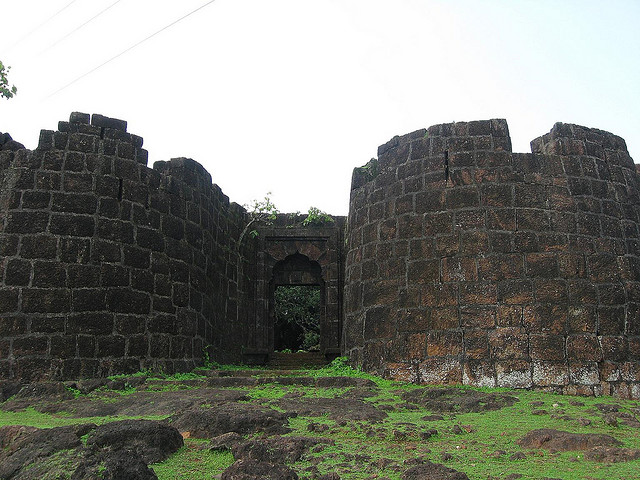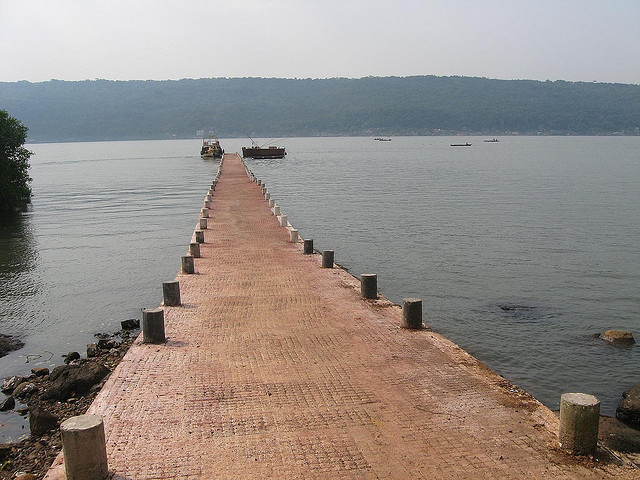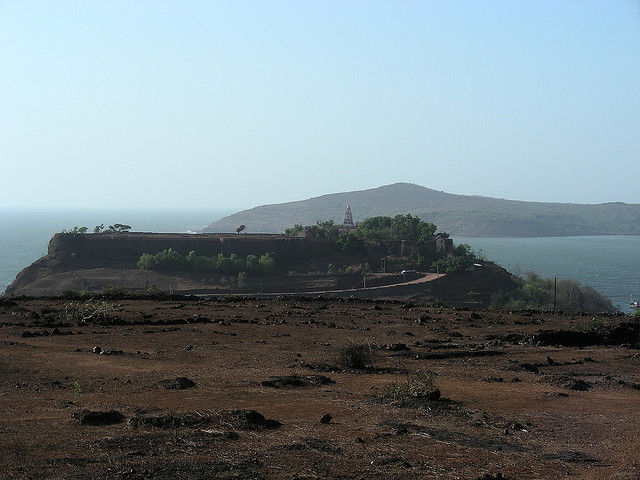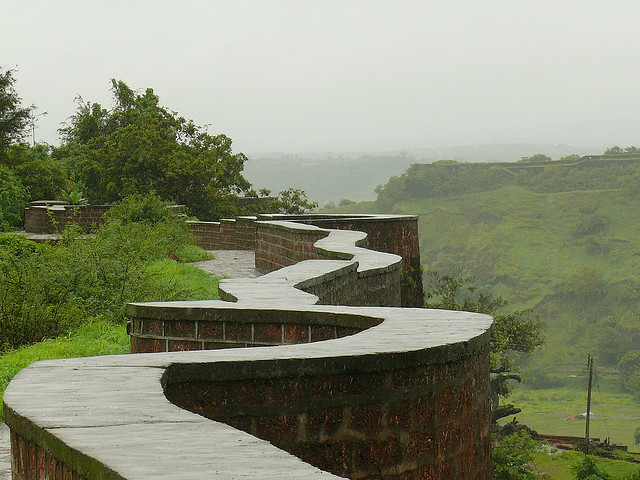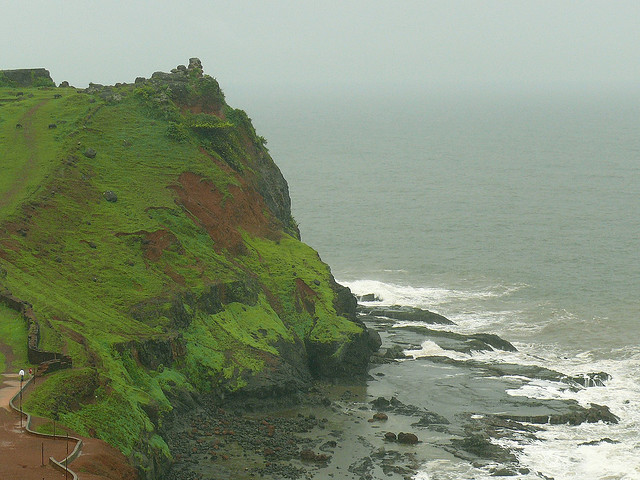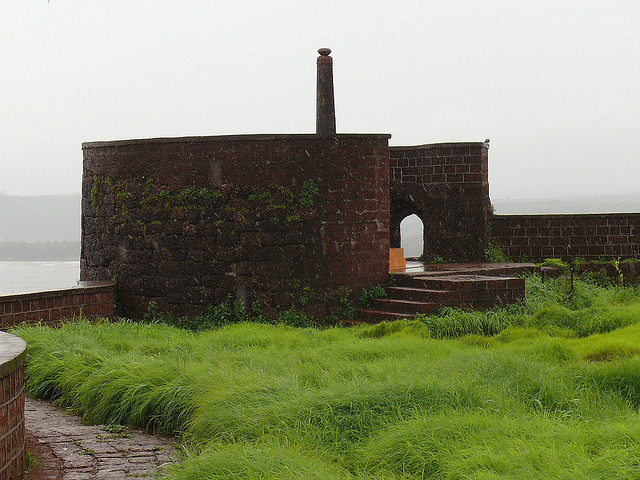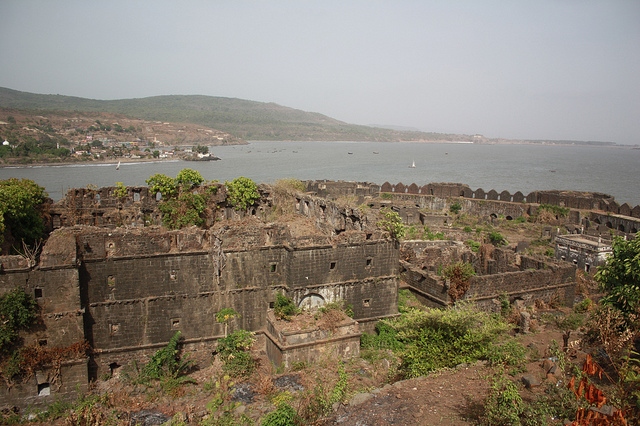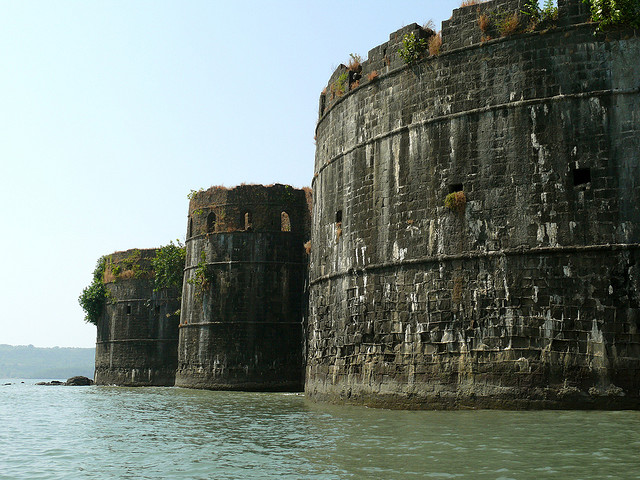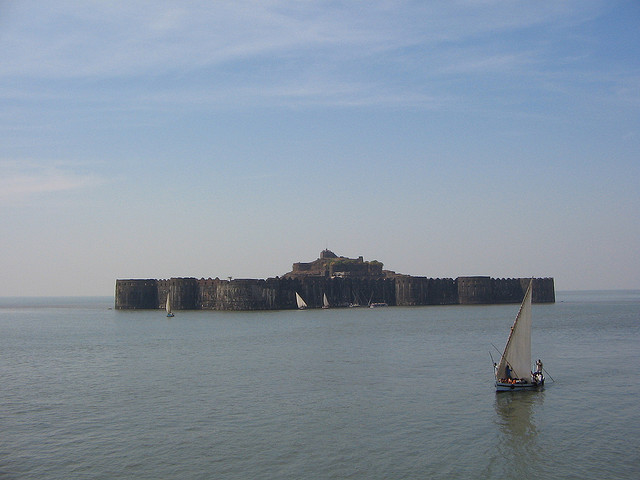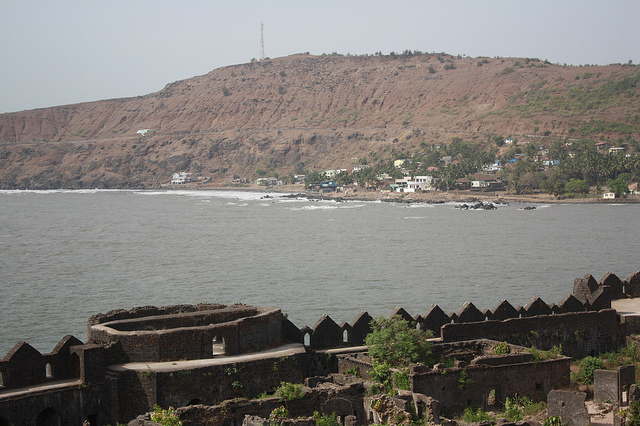Besieged by the charming Arabian Sea on the three sides, the massive Ratnadurga Fort presents a splendid look. A massive structure in the shape of a horseshoe, with a length of 1,300 meters and a width of 1,000 meters, Ratnadurg Fort was once a strong hold of the Maratha Empire.
Spread over a vast area of 120 acres, Ratnadurg Fort was under the Muslim rule for so many years. Now a collapsed structure, lying across two hills, Ratnadurg Fort gives a decrepit look.
Overlooking the Arabian Sea, Ratnadurg Fort offers the dazzling view of the sun going down the sea and the sweet sound of the pounding of the waves against the rocks makes a perfect symphony. Another specific attraction in the fort is the marvelous lighthouse situated in the bastions of the fort.
